We just finished up a few days at the summer Outdoor Retailer trade show where hundreds of brands were showing off their new gear for 2019. The show covers a ton of different categories, from climbing to running, backpacking, car camping, kayaking, packrafting, slacklining … all in a matter of a few days and within the confines of a few thousand square feet. Covering it all can feel a bit like trying to learn Portuguese, metaphysics, and the violin all at the same time.
But after scouring the trade show floor and meeting with a bunch of brands to go over their latest offerings, we’ve put together a list of some of the most interesting products we saw. Of course, we haven’t reviewed most of this stuff, so in keeping with how we do things here at Blister, we’re not going to give out awards for which new products are “The Best” (“Best” at sitting there under the harsh lights of a convention center??), but we did want to share with you what things caught our attention, and what we’re particularly excited to get out and test this year. So let’s get to it.
CAMPING / HIKING
BioLite HeadLamp
BioLite, most commonly known for their energy-generating, wood-burning stoves, is releasing their first headlamp. And while it’s pretty hard to stand out in the headlamp category, BioLite’s HeadLamp has a few key features that actually got us pretty excited. First, it’s lightweight — around 65 grams / 2.3 oz. Second, it’s bright with a borderline-blinding 320 lumens. Third, it’s really slim, with a battery pack on the back and a really minimal lighting unit on the front, which sticks out much less than most other headlamps that are similarly powerful. Other highlights include a curved shape to better fit your head, a micro-USB-rechargeable Lithium ion battery, and a reasonable MSRP of $49.95.
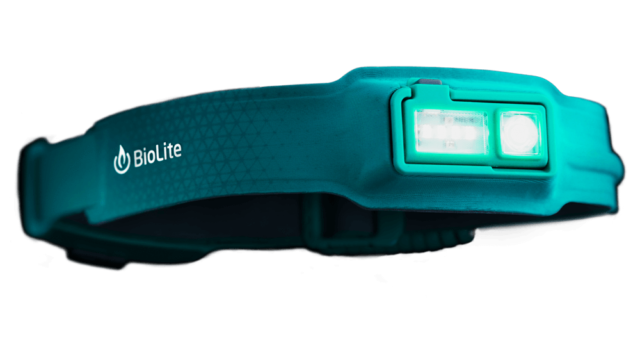
Bivystick
Satellite communication devices have come a long way in the past decade, and the Bivystick is the newest addition to the category. The Bivystick works with the Bivy app on your cell phone and the Iridium satellite network (same network used by Garmin) to let you send and receive text messages, get weather reports, track your location, and share your location with friends, family, and emergency response services. And since it works with your phone, it also includes a large built-in battery that’s capable of charging your phone 2-3 times while you’re out in the backcountry.
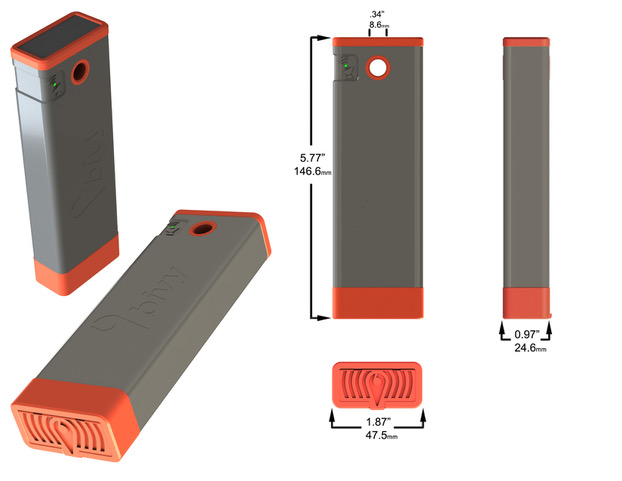
But the main differentiator with the Bivystick is the subscription plan. There’s no annual fee, and no extra activation fee. So for $17.99, you can get a month of service and 10 credits, with each credit getting you one text message, one weather report, one hour of location tracking, or one location share. Your credits can also roll over if you choose to extend the plan another month. This could make the Bivystick a good option for people that may only need the service a few times a year and don’t want to commit to expensive annual plans or think twice about activating their device because of an activation fee.
Bivystick has already been funded on Kickstarter, but for the next three days you can still get one for a discounted rate. For more info and specs, check out their Kickstarter campaign.
MSR Hubba Hubba NX
The MSR Hubba Hubba tent has become a bit of a cult classic due to its easy single-pole setup, reliable performance, backpack-ready weight, and spacious interior (compared to more minimal backpacking tents). And MSR is tweaking the Hubba Hubba NX for 2019, with some key updates focused on durability and weather resistance.
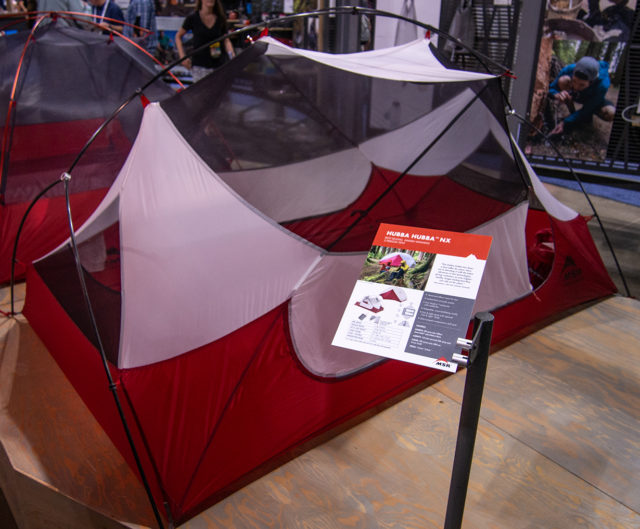
First, the Hubba Hubba NX (along with a few other tents in MSR’s line) will include custom Easton Syclone composite poles. These new poles are designed to bend, twist, and shrug off squalls while returning back to structural shape and strength much better than aluminum and carbon options. They’re reportedly as light as aluminum, but 80% less likely to fail in very strong winds.
In addition to the new poles, MSR is also adding a new coating system, called Xtreme Shield. The new coating is supposed to be last three times longer than a standard urethane coating, which, if it does work as advertised, could mean that you could have a tent that performs just as it did when you got it for years to come.
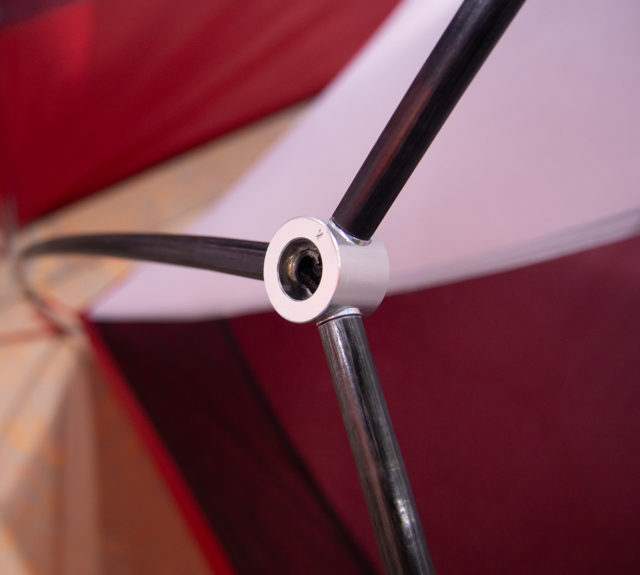
The overall silhouette of the Hubba Hubba NX remains the same, with two doors, a pretty livable interior, and a stated packed weight of around 1760 grams / 3 lbs, 14 oz. We should be testing the new Hubba Hubba NX very soon, so stay tuned…
Tecnica Plasma Shoe
Many of you probably know Tecnica for their ski boots, but last year, they made their first foray into hiking boots with the Forge boot, which featured heat-moldable elements for a more customizable fit.
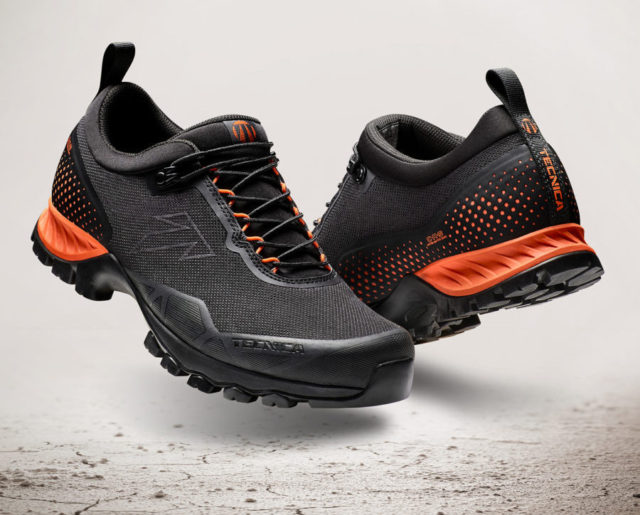
For 2019 they’re coming out with a low-cut version, named the Plasma, which has a heat-moldable insole and heat-moldable material around the heel, ankle, and arch. Blister editor, Luke Koppa, had a pair heat molded to his feet, and his initial impressions were very positive. The shoes actually have a pretty anatomical fit out of the box, but the heat molding process adds another level of customization that really isn’t seen anywhere else on the hiking shoe market. And with a Vibram MegaGrip outsole, unique (and comfortable) overlap collar design, auto-locking Kevlar laces, and mesh and Gore-Tex versions available, the Plasma looks like a solid all-around hiking shoe. Keep an eye out for our full review.
Therm-a-Rest NeoAir Uberlite Sleeping Pad
For those looking for ultralight sleeping comfort, the Therm-a-Rest NeoAir Xlite inflatable sleeping pad has long been the gold standard. Well, Therm-a-Rest is coming out with an even lighter version, dubbed the NeoAir Uberlite, which comes in at a stated weight of around 250 grams / 8.8 oz — almost 100 grams lighter than the Xlite. Still offering 2.5” of plush, air-filled comfort, the Uberlite has an R value of 2.0 and a lighter fabric which all makes it look like a very intriguing option for those who are trying to cut down the weight of their sleep system.
PACKS
Black Diamond Distance 8L & 15L packs
If you’re someone who likes to blur the lines between trail running and mountaineering, then Black Diamond’s new Distance 8L and 15L packs might be worth a look next year. With a mesh, vest-like front construction with storage for two front soft bottles, they are designed to be stable while running. But in the back, the vests look more like Black Diamond’s climbing packs, with a tough, light fabric, attachment points for two ice tools and a pair of trekking poles, and a minimal design. These look pretty awesome.
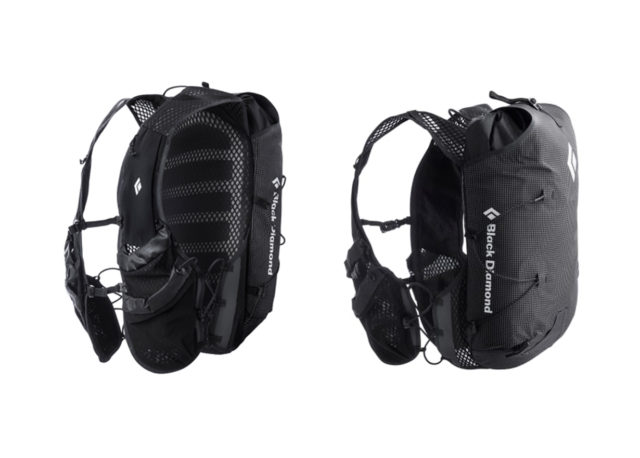
Mammut Active Spine Technology & Trion Packs
While we’ve seen packs with pivoting hip belts or shoulder straps, we’ve never really seen anything like Mammut’s new “Active Spine Technology,” which will be used on their redesigned Trion packs. A quick walk with the pack revealed that it does a remarkably good job of pivoting and moving with your body, allowing for a much more stable feel. We’re excited to put this to the test in the field.
Mountain Hardwear “Alpine Light” Dyneema Packs
Mountain Hardwear is overhauling a ton of their products, including their alpine packs. The new Alpine Light packs use a fabric made with Dyneema, the extremely strong and light fiber that’s often used in ultralight backpacking gear. The packs also feature taped seams for extra water resistance, removable frame sheets, and only the features you need (e.g., compression straps, ice-tool attachments, and exterior zippered pockets). In other words, these packs look like legit, purpose-built alpine gear-haulers, and will come in 28L, 35L, and 50L options, which come in at $270, $330, and $350, respectively.
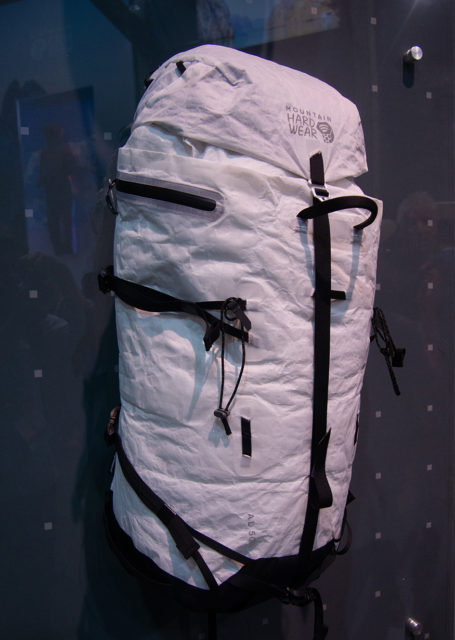
Mystery Ranch Expedition Line
Mystery Ranch made some major updates to their core line of expedition packs, including an all-new internal “Astral” frame which is designed to offer more comfort under heavy loads (Mystery Ranch said the packs are designed for loads up to around 80 lbs. Oof). The Expedition lineup consists of the 71L Glacier, 83L Terraplane, and enormous 100L T100. All the packs feature a removable lid that now doubles as a daypack as it can be paired with the main packs’ removable Futura Yoke. Other notable updates include a switch to a more durable 500-denier Cordura fabric, easier access on the side due to buckled compression straps, and a larger sleeping bag compartment.
Mystery Ranch also made some cool updates to their Trail line of packs, with some changes to the materials designed to make them lighter and more durable.
CLIMBING
Black Diamond Camalot C4
One of the major trends we saw at OR was brands updating their time-tested products. One of the most important of these updates is Black Diamond’s new Camalot C4 cams, some of the most popular cams in the world. The new C4’s are reportedly 10% lighter than the previous version, have a widened trigger for easier handling, and the size #4, #5, and #6 cams include trigger keepers to decrease bulk while racked. We think all these updates make a lot of sense, and we’re excited to test out the new C4’s.
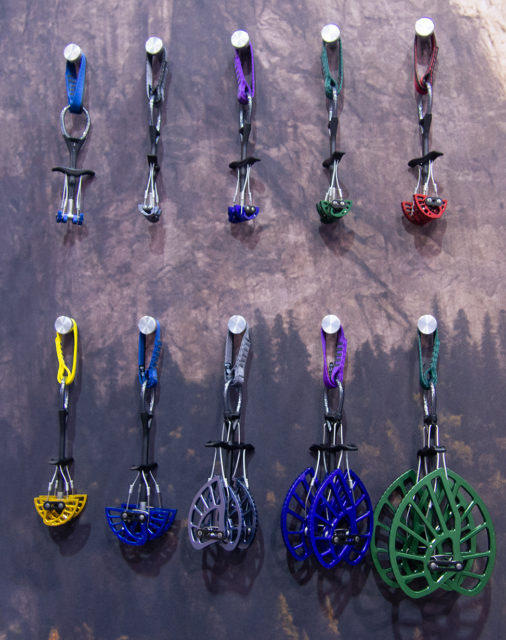
Black Diamond Zone & Zone LV
Black Diamond is continuing to expand their climbing shoe lineup, with the newest additions being the Zone and Zone LV. Designed for climbers who are starting to push into harder routes and want a more downturned shoe while not switching to the vice-like fit of super aggressive options, the Zone features a more downturned last than their beginner-oriented Momentum, a comfy-looking engineered mesh upper, and a “medium flex” midsole.
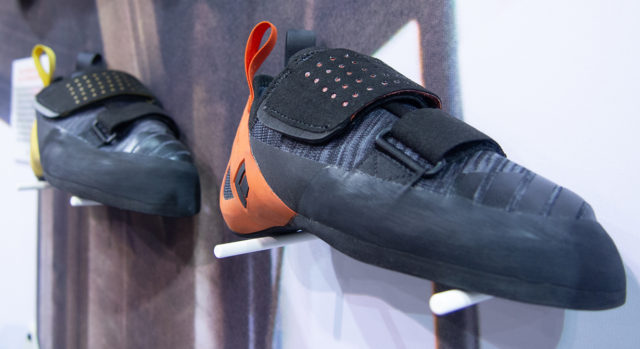
Scarpa Arpia
The Arpia is one of the new additions to Scarpa’s climbing shoe lineup, and is targeted at a similar crowd as the Black Diamond Zone — climbers that are looking to get onto more difficult routes but don’t want to sacrifice a ton of comfort. The Arpia is more downturned than Scarpa’s comfort-oriented Force V, but a bit softer than their Vapor V. Combine this with the Arpia’s stretchy interior, padded tongue, simple Z-Strap closure, and V-Tension rand, and the resulting shoe looks like it could be a solid option for people that want to try out more aggressive shoes as they transition to harder routes and / or outdoor climbing.

Scarpa Vapor V
Scarpa is also tweaking their popular Vapor V shoe, adding rubber reinforcements to the heel to aid with heel hooking (the new heel is similar to that on their Instinct VS). The new Vapor V is also switching from a leather upper to a synthetic upper for decreased break-in time and is also swapping a Flexan midsole for a plastic “Talon” midsole that extends all the way from the tow up over the heel for increased power transfer.
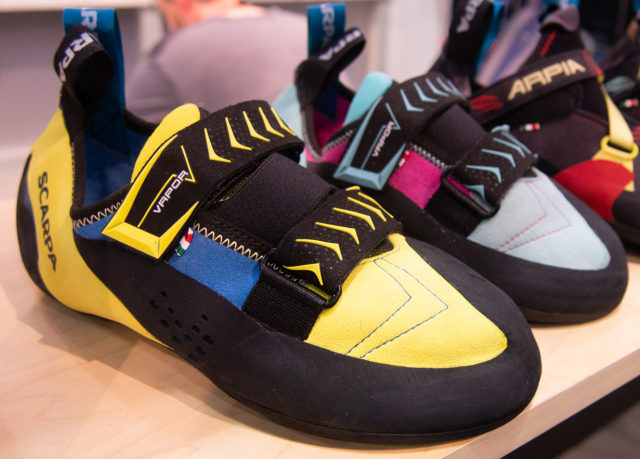
APPAREL
Black Diamond Distance and Deploy Wind Shells
If there’s one trend in the apparel category that stood out at the show it was wind shells. Everyone seemed to be coming out with new versions of these classic pieces, and Black Diamond’s were astonishingly light. Their Deploy Wind Shell features a 5-denier fabric that basically feels like nothing, and the whole shell reportedly weighs in at 48 grams. That’s crazy light.
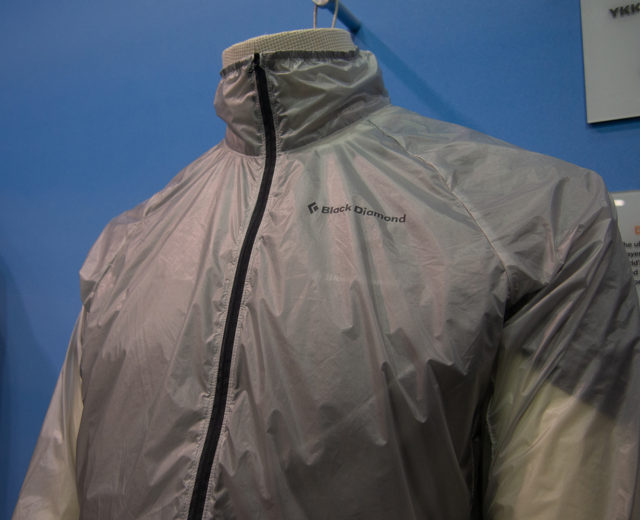
They also showed off the Distance Wind Shell that features a new DWR that coats the individual fibers of the fabric, rather than just the fabric itself. This is supposed to provide more consistent and longer lasting water repellency, and we’re eager to put that to the test.
Mountain Hardwear Kor Preshell
Yet another addition to the wind shell category is Mountain Hardwear’s new Kor Preshell series. Available in a 96 gram / 3.4 oz Pullover and 139 gram / 4.9 oz Hoody, the Kor Preshell jackets use a 20-denier stretch ripstop Pertex Quantum Air fabric that reportedly has a CFM of 20, making it a direct competitor to the new Patagonia Houdini Air. The Kor Preshell’s fabric also has an amazing hand feel unlike any other wind shell we’ve seen. We’re very excited to test out these new breathable wind shells.
Norrona Skibotn Gore-Tex Pro Jacket
Norwegian outdoor brand, Norrona, is continuing to expand their mountain bike lineup with the addition of their new Skibotn Gore-Tex Pro Jacket. This waterproof shell features panels in the shoulders and elbows that are made of the new Gore-Tex Stretch fabric, which is far stretchier than any typical waterproof / breathable fabric. Norrona also says that panels should work with most elbow and shoulder pads for more downhill-oriented riders. The jacket also has a few other noteworthy features, including a venting front zipper, drop hem, and stowable hand covers for riding in cold, wet weather.

Norrona also has a bunch of really cool stuff coming this fall, so stay tuned for some reviews.
Patagonia R1 Hoody & Zip-Up Hoody
Patagonia is celebrating the 20th anniversary of their classic R1 Hoody by adding another silhouette to the line — a full-zip hoody with drop-in handwarmer pockets. This piece looks like a great option for people who want the performance of the R1 Hoody without looking like they’re trying to get people to think that they’re on their way to go climb the Eiger.
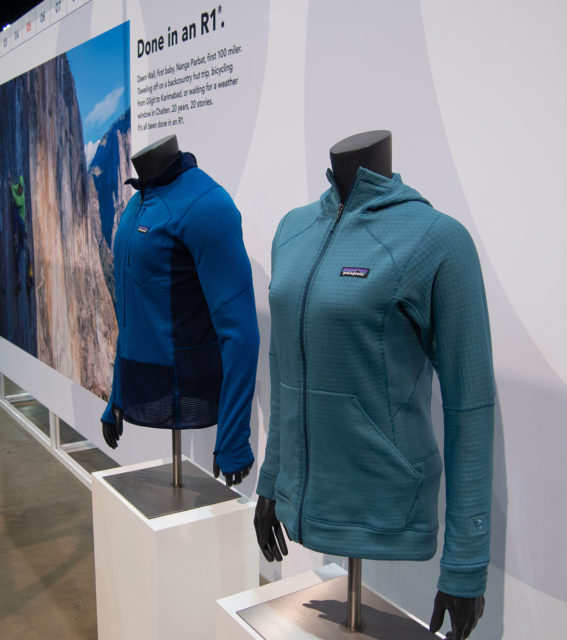
Patagonia is also making a very slight change to the standard R1 Hoody’s fabric. But before everyone starts panicking, don’t worry. It’s just a change to the recycled content, with the new R1 Hoody being made almost entirely of recycled polyester.
Patagonia Houdini Air
Arguably as classic as the Patagonia R1 Hoody, the Patagonia Houdini wind shell is also getting a new version, called the Houdini Air (the original version will still be available). If there is one drawback to the standard Houdini, it’s probably its breathability. So to address this, Patagonia is releasing the Houdini Air, which uses a more breathable fabric (reported CFM of 20) that also feels a bit better on skin due to its raised surface texture. We’re really excited about this one.
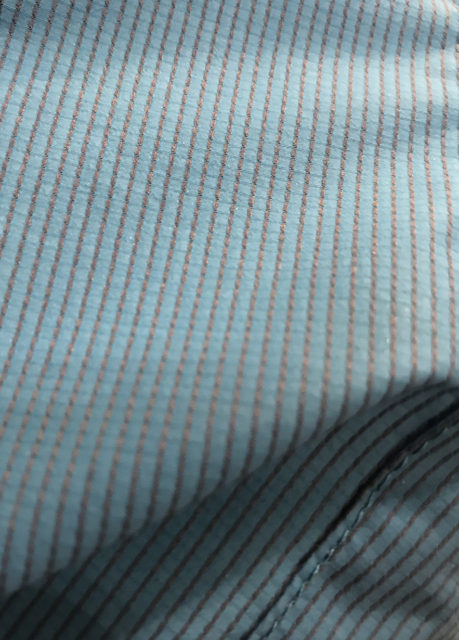
Patagonia Dirt Roamer Jacket
Blister’s apparel nerds, Sam Shaheen and Luke Koppa, were pretty geeked up about this piece. Designed for mountain biking, the Dirt Rover uses a DWR-treated soft shell fabric that reportedly has a CFM of 40 (in other words, it should be very breathable). The fabric also just feels amazing on skin, and the Dirt Rover’s feature set is rounded out by taped seams and a dropped hem for increased coverage while biking. While it does look like an excellent option for biking, we’re also very curious about how the Dirt Rover would handle other activities like running, ski touring, and alpine climbing.
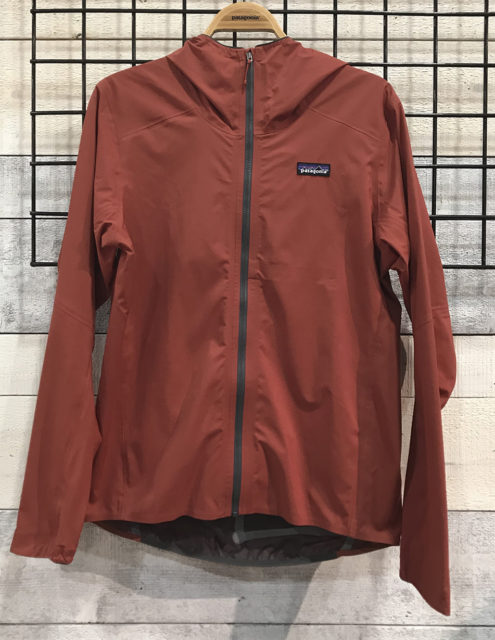
Rab Kinetic Alpine Jacket & Pants & Wind Shell Kit
We’ve been spending time in the original Rab Kinetic Plus Jacket and while we’re still putting together our full review, the short story is that it’s one of the most comfortable waterproof shells we’ve used. For 2019, Rab is adding a new version, called the Kinetic Alpine, which features ceramic-coated sections of fabric in high-wear areas like the shoulders of the jacket and knees of the pants for added durability. The Kinetic Alpine kit looks pretty awesome for fast-paced alpine activities, and its fabric is just ridiculously comfortable. We’re eager to check out this one.
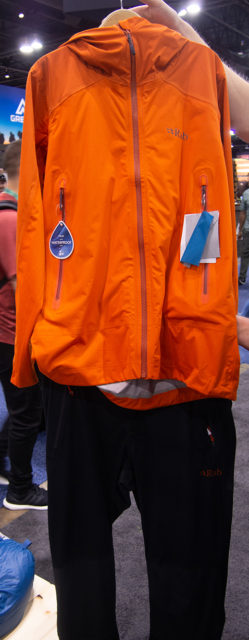
Rab also joined the wind shell party, offering an entire wind shell kit (jacket, pants, and gloves) that reportedly comes in at a total weight of less than around 227 grams / 8 oz. For something to throw in your pack just in case things go wrong, this kit seems pretty sweet.
RUNNING
Dynafit Feline Up Pro Shoe
Dynafit announced a brand-new trail shoe called the Feline Up Pro, which is targeted at the “alpine running” crowd — those people who like to run very fast and cover a lot of vertical over a very short horizontal distance. I.e., masochists.
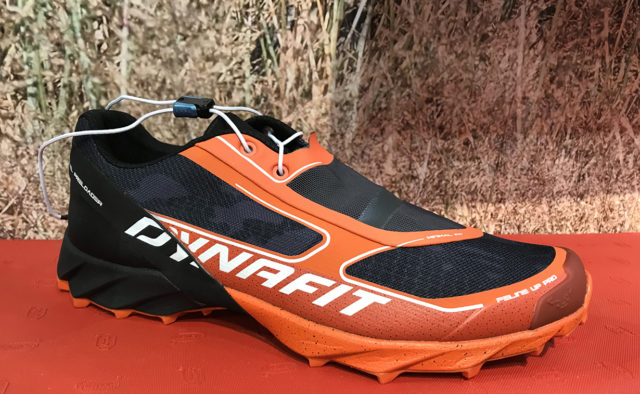
Just kidding. We like to suffer sometimes, too. And the Feline Up Pro looks like the right shoe to do it in. It has a unique Vibram MegaGrip outsole that uses what they’re calling “Lite Base” technology, which is thinner and reportedly 25% lighter than traditional soles. Top it off with a 4 mm drop and a stated weight of 230 grams, and the Feline Up Pro seems like a strong option for technical runs in the mountains.
Hoka One One Speedgoat 3
We’re big fans of the Hoka Speedgoat 2, and it’s getting some slight tweaks for 2019. The midsole and outsole stay the same (which we’re happy about) but the upper gets a bit more reinforcement and stabilizing overlays. There will also be a waterproof version of the Speedgoat 3, as well as a waterproof mid-height version.
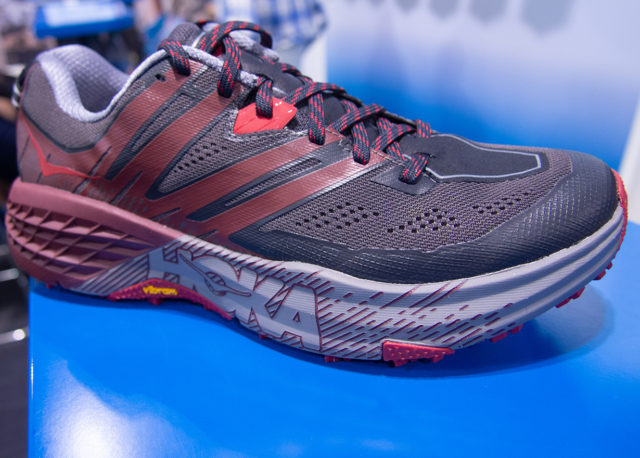
Altra Superior 4.0
Altra announced a new version of their mid-cushioned trail shoe, the Superior 4.0, which will reportedly be lighter at around 224 grams / 7.9 oz, include a stickier MegaTrac outsole, a supposedly more stable Quantic midsole, and a sleeker upper and heel cup.
Altra Kayenta
On the road side of things, Altra is launching the brand-new Kayenta, which will reportedly be the lightest 23 mm stack height shoe on the market, with a stated weight of 167 grams / 5.9 oz for the men’s version. The Kayenta has a unique dual-layer upper, with a sock-like liner and thin, but more supportive outer shell.

The Mammut Active Spine Technology sounds pretty cool. Which Trion packs are getting the active spine treatment?
Almost sounds like an improved version of the Arc’teryx Arrakis straps/hipbelt